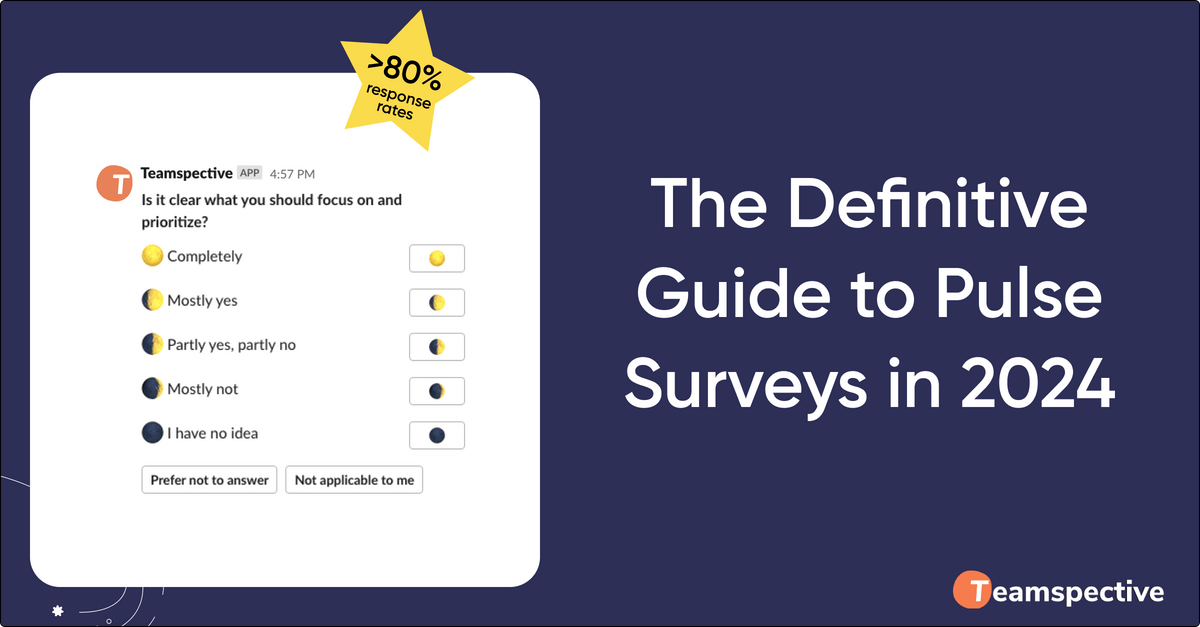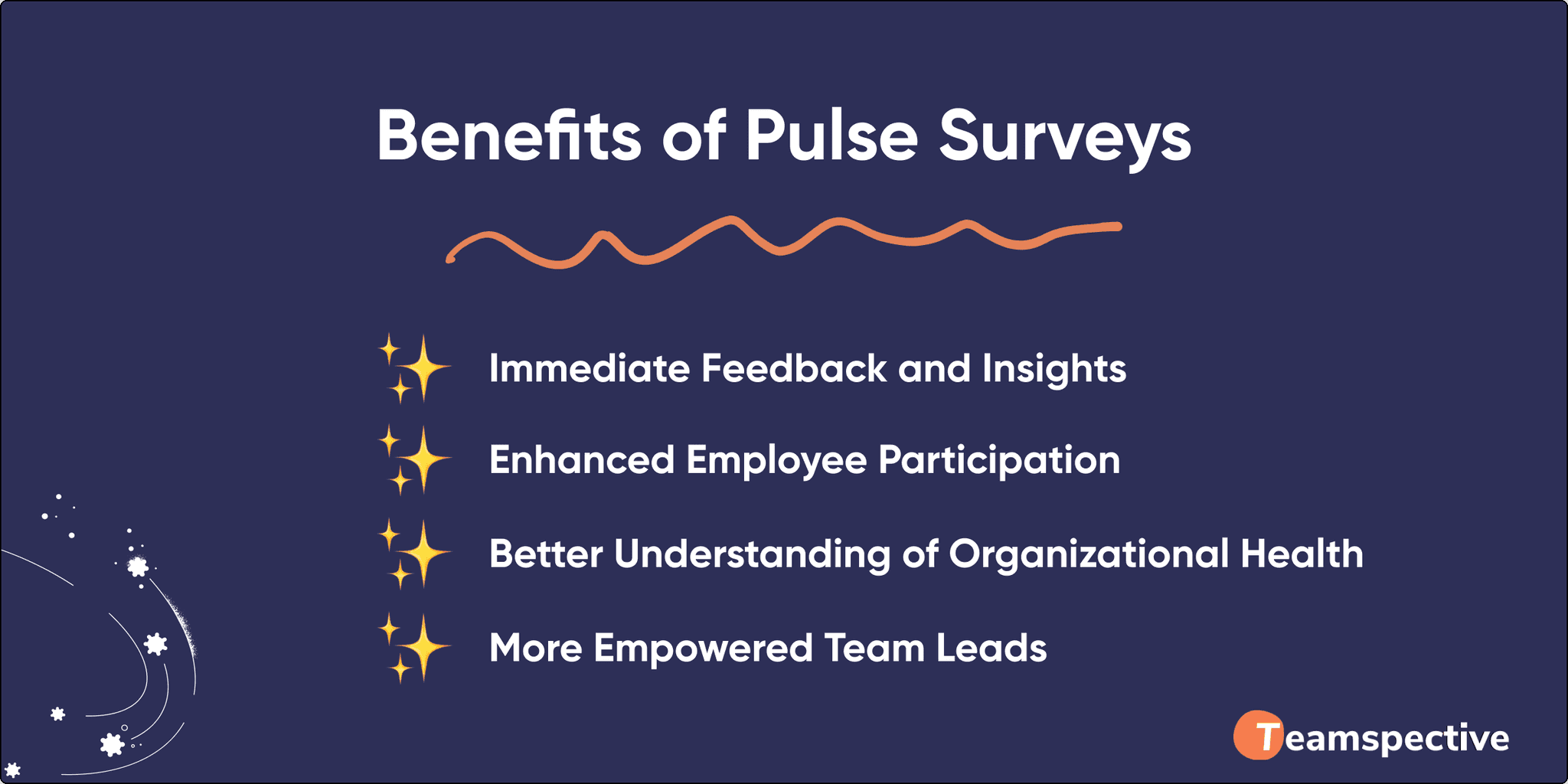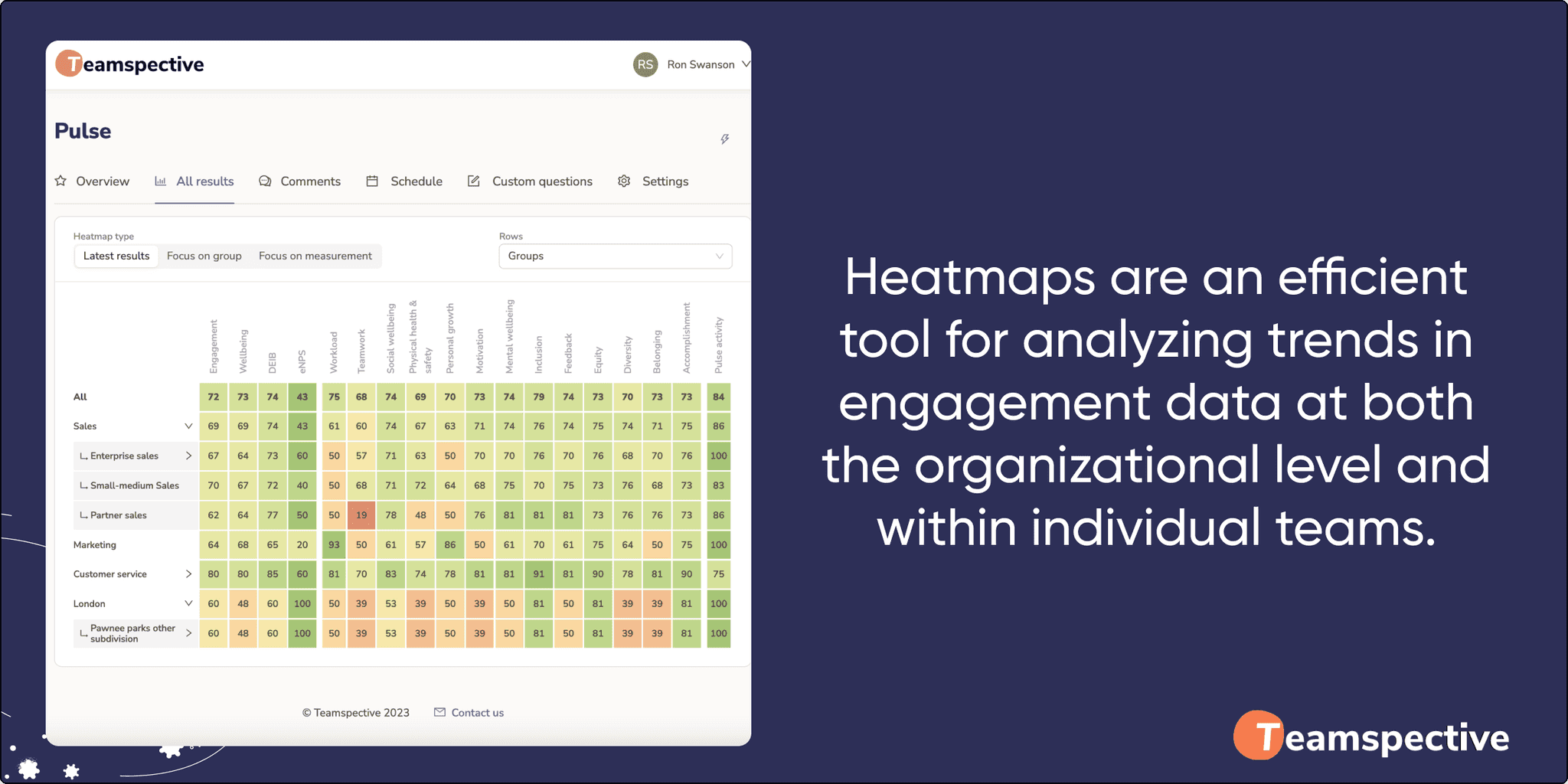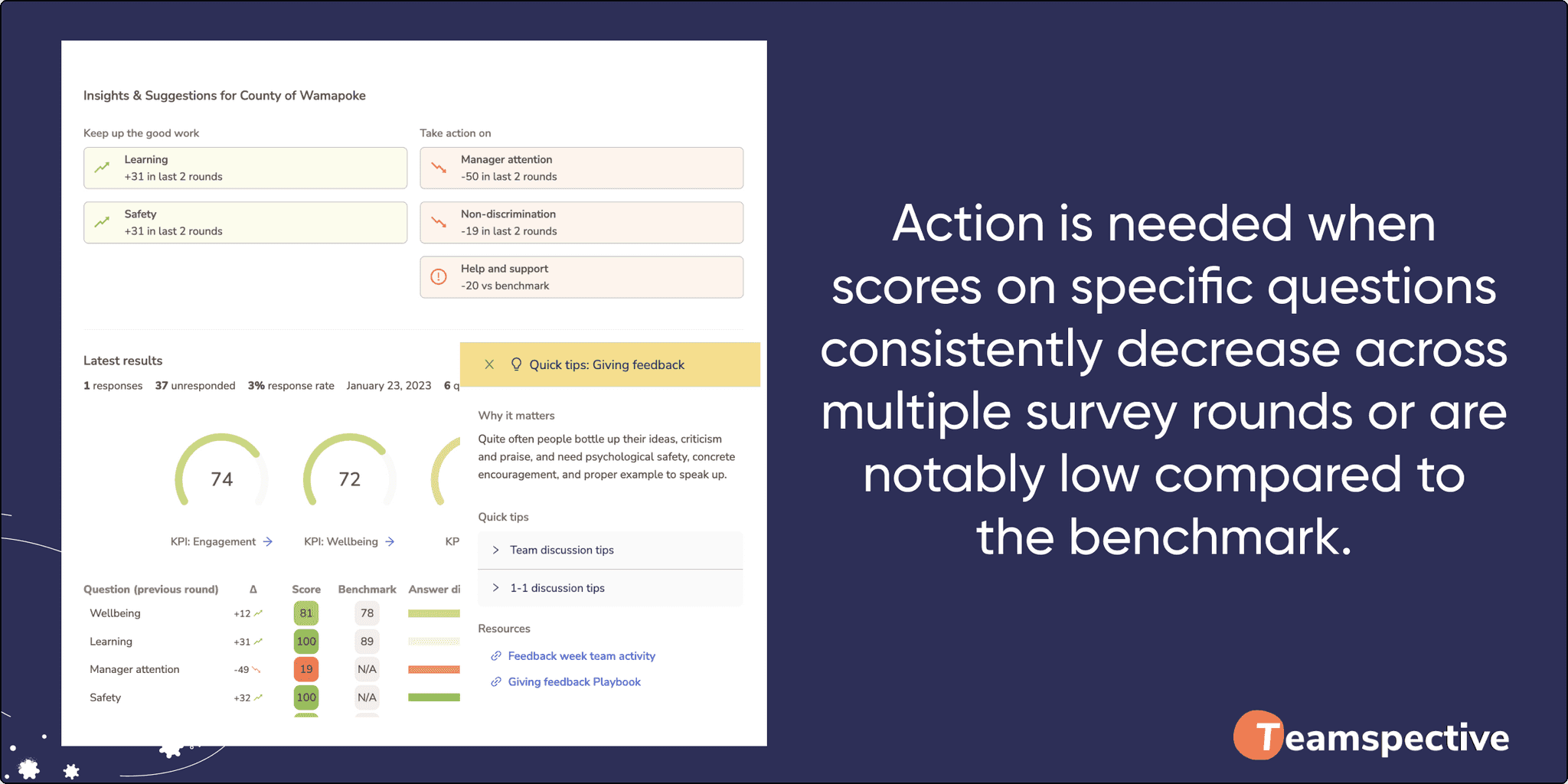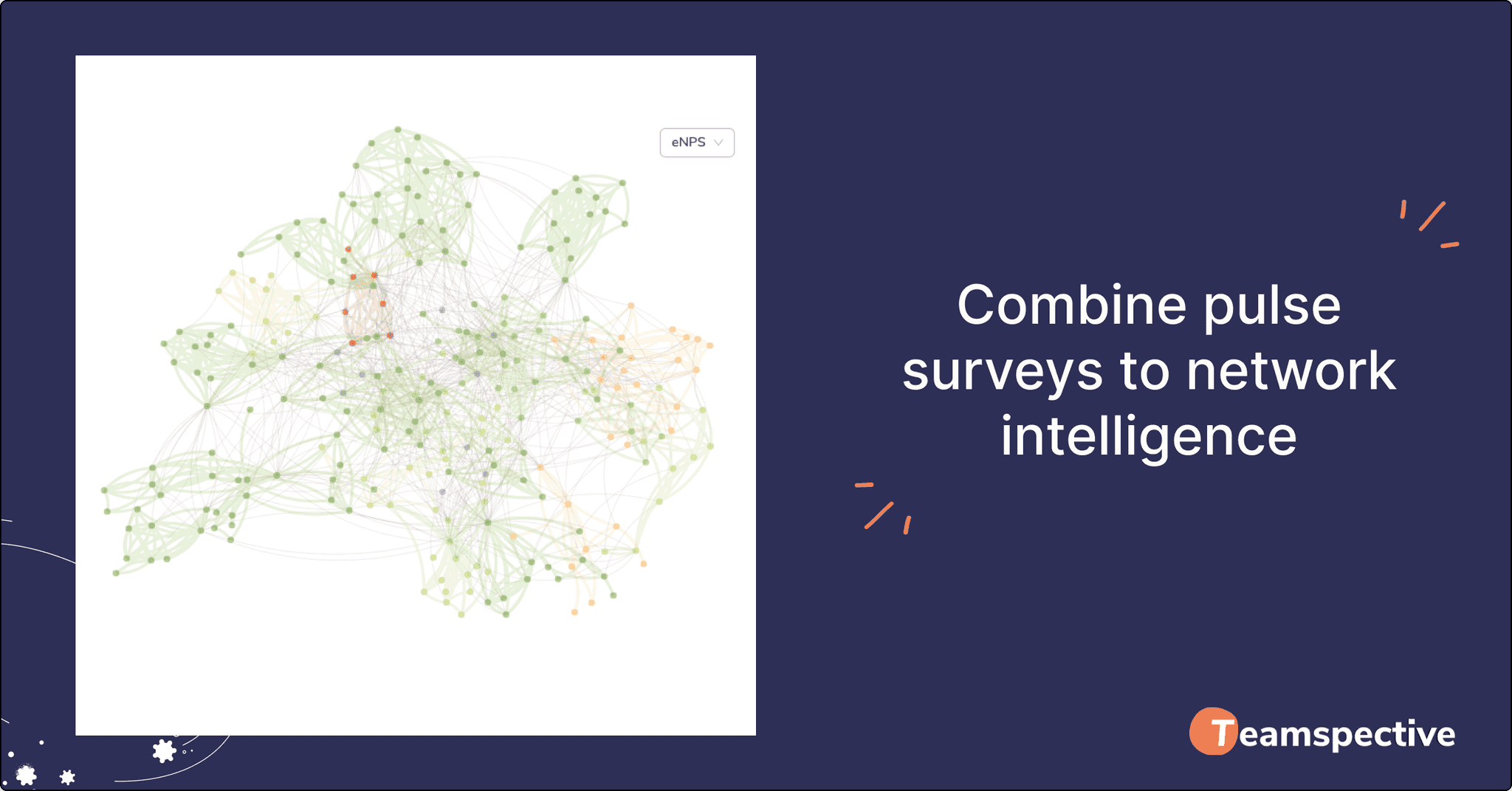Table of Contents
- Introduction
- What is a Pulse Survey?
- The Benefits of Pulse Surveys
- Designing an Effective Pulse Survey
- Interpreting Pulse Survey Results
- Challenges and Best Practices
- The Future of Pulse Surveys
- Conclusion
1. Introduction
The ability to measure employee engagement and respond to employee sentiments is invaluable for organizations. This is what a pulse survey is for. As a streamlined and efficient way to gather feedback, pulse surveys have become increasingly popular in organizations striving for agility and continuous improvement. Pulse surveys offer rapid insights into the health of a company, making them an indispensable tool for today's proactive business leaders.
2. What is a Pulse Survey?
A pulse survey is a concise set of questions designed to quickly gauge the mood and engagement of employees. Unlike traditional surveys, which are often extensive and conducted sporadically, a pulse survey is fairly brief and is executed at frequent intervals. These surveys can be conducted weekly, bi-weekly, or monthly, catering to the organization's specific needs. The agility and frequency of pulse surveys are pivotal, providing timely insights into employee sentiment, a vital aspect of organizational health.
For more on the differences of traditional HR surveys vs. pulse surveys, see our blog post “HR Surveys vs Pulse Survey – And How to Get the Best of Both Worlds”.
3. The Benefits of Pulse Surveys
Immediate Feedback and Insights
Pulse surveys offer immediate feedback. This allows management to swiftly address any issues, and prevent things from escalating, a significant step up from waiting on annual, bi-annual and even quarterly survey results. The regular nature of these surveys also helps in tracking the effectiveness of changes or initiatives within the organization.
Enhanced Employee Participation
Due to their concise nature, employees are more likely to participate in pulse surveys. This leads to more accurate data, as employees are encouraged to provide honest feedback without the burden of lengthy questionnaires.
Better Understanding of Organizational Health
Regular pulse surveys are an excellent tool for monitoring the overall health of an organization. They can help in identifying trends in employee satisfaction and engagement, providing crucial data to inform strategic decisions.
More Empowered Team Leads
Benefits of pulse surveys are not limited to leadership and other higher-ups in the organization. Our first party research has found that >80% of teams have team-specific improvement areas in their survey results. By giving individual team leads constant insights into how their team members are doing and what the team-specific issues are, pulse surveys empower team leads to take action and improve the health of their teams as well.
4. Designing an Effective Pulse Survey
Put Effort Into Survey Design
The key to an effective pulse survey lies in its questions. These should be direct, easy to understand, and relevant to the specific aspects of the work environment you wish to assess. Utilizing scales (like 1-5 or 1-10) or yes/no formats can make the survey more user-friendly and encourage participation. You should also ask for additional details via open comments as these can provide you with much deeper insights.
Analyzing open comments can be a lot of work, especially in bigger organizations where there might be hundreds of answers. Nowadays modern tools can do this automatically in minutes instead of an HR Manager needing to spend several days on it. For example, Teamspective’s pulse surveys are powered with AI Sentiment Analysis allowing to easily analyze hundreds of comments and highlight positive and negative sentiment.
It should be noted that designing a statistically significant and impactful engagement survey is not easy. You’ll need statistical knowledge, understanding of measurement scales and how different metrics influence each other. Luckily there are purpose-built tools like Teamspective that take care of this for you.
For more information on best practices of survey design, see our whitepaper “Building Teamspective's Pulse Survey Data Model”.
Balance Frequency and Length
It’s crucial to strike the right balance between the frequency of surveys and their length. While frequent surveys provide up-to-date feedback, they should not be so frequent as to cause survey fatigue. Limiting the survey to a maximum of 10 questions is a good practice.
Ensure Anonymity
Guaranteeing anonymity is essential to encourage honest and candid feedback. Employees should feel confident that their responses cannot be traced back to them.
Using the right 3rd party tools can also improve the guarantee of anonymity and security. A dedicated software tool has much stronger data protection than manually created forms, and when 3rd party software handles the answers, it prevents the employer from pulling raw data (such as submission IP address) to identify the responder for example.
For more information on the most crucial employee survey questions, see our article “10 most important employee survey questions”.
5. Interpreting Pulse Survey Results
Data Trend Analysis
Once the results are in, analyzing trends in the data is crucial. Look for patterns such as increases or decreases in satisfaction levels, and pay attention to any significant changes that might indicate areas requiring immediate attention.
The latest tools such as Teamspective’s Pulse Survey solution leverage AI to generate these insights and can provide this information for you and each team lead at a glance in a user-friendly and easily digestible manner.
Focus on Actionable Strategies
The ultimate aim is to translate these insights into actionable strategies. For instance, if a survey indicates low morale, consider measures such as implementing team-building exercises or reviewing workload distributions.
Conversely, if morale is high, think of actions that can best maintain or even improve the current state as it helps maintain lower turnover and higher employee performance.
6. Pulse Survey Challenges And Best Practices
It’s tempting to think that having pulse surveys in place is enough to improve team wellbeing and collaboration. However, it is even more important to create a routine of taking action and monitoring progress on the collected results.
Overcome Survey Fatigue
One of the main challenges is avoiding survey fatigue. Ensure surveys are concise and not overly frequent to keep participation rates high. You don’t need to ask every single question every time either – you can change the questions between pulse rounds as long as you follow scientific best-practices in survey design.
Teampective’s pulse solution can do this for you automatically. Our scientifically-proven survey structure tracks the most crucial metrics for teamwork and leadership, asking about the most important and fast-changing metrics most frequently.
Build Trust with Anonymity
Another challenge is maintaining the anonymity of responses. Effective communication about the purpose and benefits of the surveys, along with the assurance of anonymity, can help in building trust. Avoid data privacy concerns by communicating clearly how data is protected and used in the analysis.
Communicate the Value of Feedback
It's essential to communicate to employees how their feedback contributes to organizational improvements and what actions are taken according to pulse results. This communication reinforces the value of their input and encourages continued participation. It is also important to respond quickly, and not let feedback sit unaddressed for weeks.
Empower Individual Leaders to Take Action
Pulse surveys are typically owned by HR managers who should ensure that individual team leads understand data and solve issues in their teams. Team leaders are often busy with their daily tasks, which can lead to engagement data being neglected. Offering training and workshops for leaders is crucial in order to establish a culture of continuous improvement. This is also something Teamspective’s professional services team can help you with.
Give Recognition
You should regularly check and report on the improvements made based on survey results. You also need to acknowledge and celebrate these improvements on an organization-wide level as well as encourage team leads to do it in their teams.
7. The Future of Pulse Surveys
Technological Integration
The future of pulse surveys is going to be heavily influenced by technological advancements. Sophisticated data analytics tools will provide deeper insights, while AI will offer more personalized survey experiences, enhancing engagement and accuracy.
Adapting to Evolving Workplaces
As workplaces continue to evolve, so will the methods used to understand them. Pulse surveys will undoubtedly play a crucial role in this evolution, adapting to meet the needs of an increasingly diverse and dynamic workforce.
One recent development has been the explosive growth in remote and hybrid work, which has dramatically affected how organizations operate and how people interact. The most advanced solutions like Teamspective allow you to understand these changes better for example by overlaying network and engagement data to see unique pain points in cross-functional teams and different parts of the organization.
8. Conclusion
A pulse survey is a powerful tool for measuring employee engagement and maintaining a healthy organization. By regularly checking in with employees, companies can create a culture of openness and responsiveness, prevent engagement issues before they escalate, and improve employee retention.
This guide is a starting point for any organization looking to implement pulse surveys. Remember, the ultimate goal is to create a dialogue where employees feel heard, and, more importantly, that their feedback drives meaningful change.

